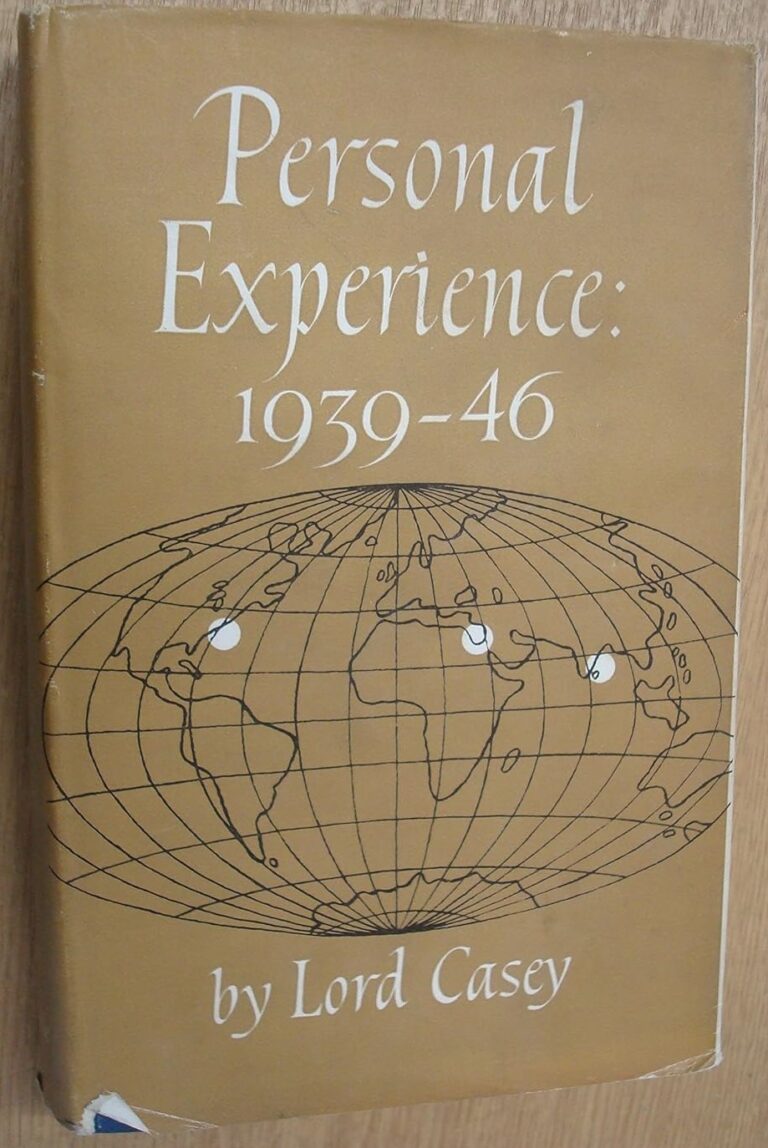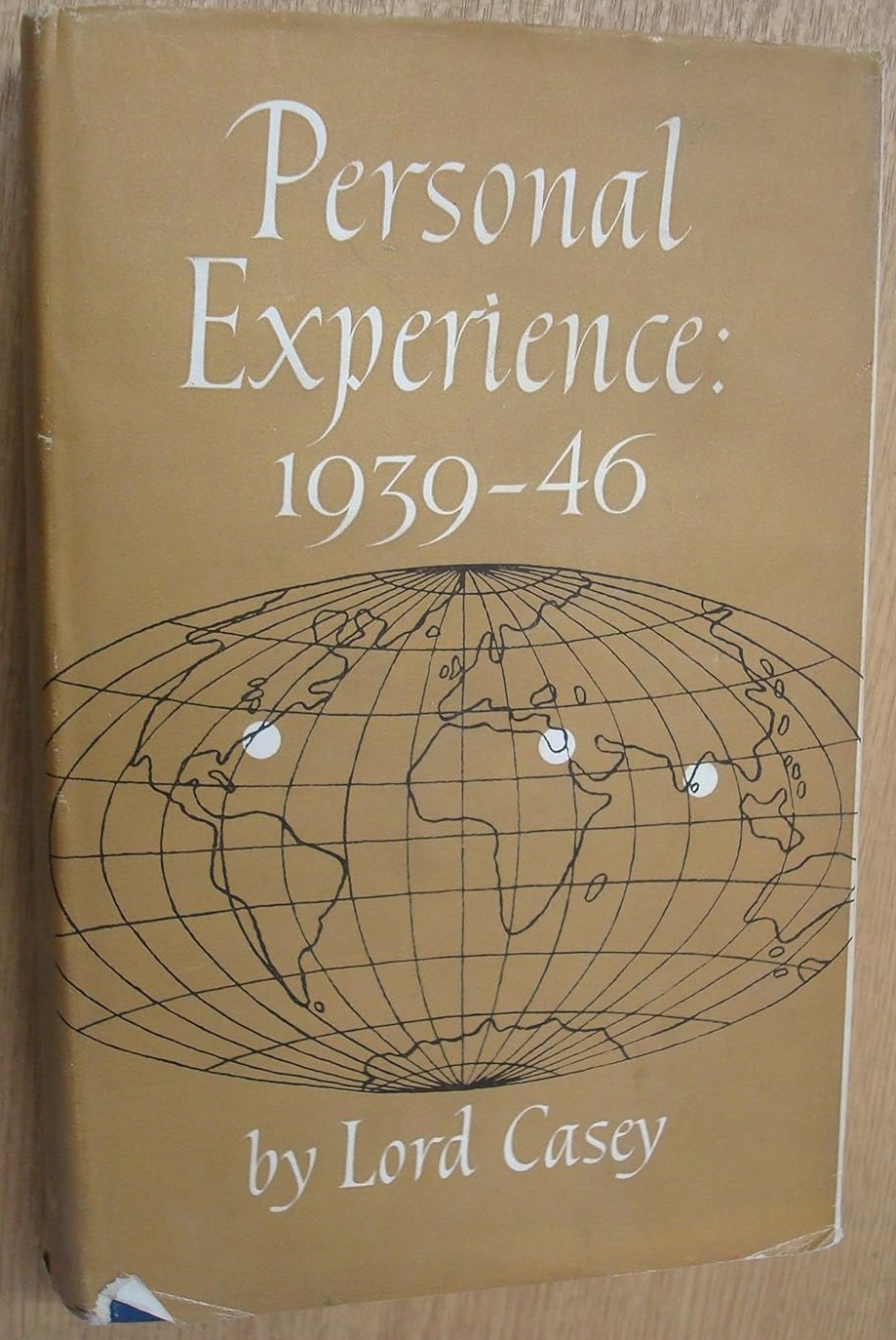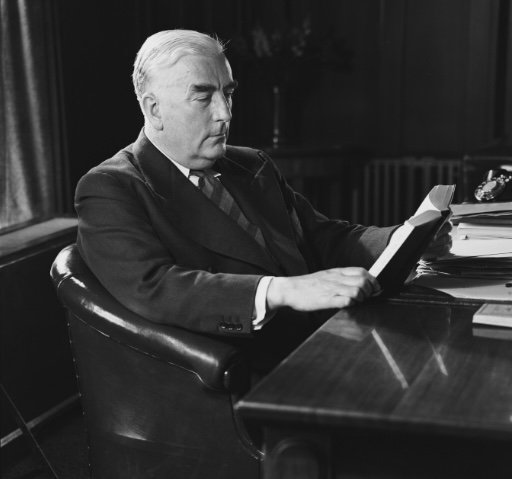Richard Casey, Personal Experience 1939-1946 (1962)
Who can claim credit for instigating Australia’s long-standing alliance with the United States? While both sides of Australian politics try to stake a claim via mythologising Curtin’s ‘Look to America’ statement of December 1941 or the Menzies Government’s signing of the ANZUS Treaty in September 1951, the ‘forgotten’ architect of the alliance may well have been Richard Casey – acting at the behest of the first Menzies Government of 1939-41.
In January 1940, in one of the most important moments in the development of an independent Australian foreign policy, Menzies appointed Casey as Australia’s first ever ‘Minister’ (Ambassador) to Washington. This was the first full diplomatic legation Australia had established outside of the British Empire, and an acknowledgement that what Australia wanted out of the Americans was inherently and substantially different to what Britain wanted.
Casey’s mission was to press Australian strategic interests, particularly in regard to a potential outbreak of conflict with the Japanese in the Pacific. Personal Experience provides fascinating insights into just how difficult of a task this was at the time. When Casey arrived in February, not only was the American public still firmly in favour of maintaining an isolationist approach, but in many cases they were actively hostile towards the British (and therefore the Australians) for trying to drag them into a war that they did not want to fight. Casey records a particularly terse exchange with Republican Senator and potential presidential nominee Arthur Vandenburg, who argued that the defeat of Britain would be ‘unpleasant’ but not ‘catastrophic’, as its people could simply relocate to Canada, making North America a powerful bastion of democracy, and leaving Europe to its fascist fate. Even when Americans did acknowledge they had interests in the Pacific, they were firmly of the view that it was specifically the northern and central Pacific. Roosevelt was quite open about the fact that ‘so far as Australia and New Zealand were concerned… the element of distance denoted a declining interest on the part of the United States’.
In such an environment there was little use in appealing to shared values or ties of kinship, as make up so much of the modern rhetoric surrounding the alliance. Hence Casey, who held a distinctly realist view of world affairs, decided to focus on convincing Americans of the fact that Australia was full of resources and assets, such that it was in their immediate self-interest to secure them. As James Prior has argued, Casey tirelessly lobbied America’s officials and military leadership on the merits of using Australia as a base should a full-scale war with Japan be required, even giving them specific details about which locations they should use. He also embarked on a concerted public speaking tour, trying to raise the profile of ‘Australia’ such that it was no longer viewed as just another part of a monolithic British Empire, but a distinctive entity that had more in common with America than Britain itself. Although he certainly lobbied for the Americans to support the British – again on the grounds of self-interest, for he suggested that the isolationism of the Munroe Doctrine was based on the assumption of a pacified Atlantic Ocean, which needed to be upheld by the Royal Navy.
By early 1941, American planners were holding secret meetings in which they suggested that ‘Australia would be a principal Pacific base and a significant supply provider for the global war effort’. By the time Pearl Harbour was attacked and it became clear that the American base in the Philippines might not hold, this idea, which had once seemed novel, was now the preferred approach. Casey even received a phone call from Roosevelt insider Harry Hopkins congratulating him on the fact that his ‘representations… were bearing very promising fruit’. The decision by the Americans to use Australia as a base essentially guaranteed that there would be enough American resources committed to Australia to prevent a successful Japanese invasion. And it was a decision made as part of a plan authored by Casey associate General George C. Marshall, and signed off by Roosevelt on 17 December, 4 days before Curtin ‘looked to America’.
You might also like...
Sign up to our newsletter
Sign up for our monthly newsletter to hear the latest news and receive information about upcoming events.



